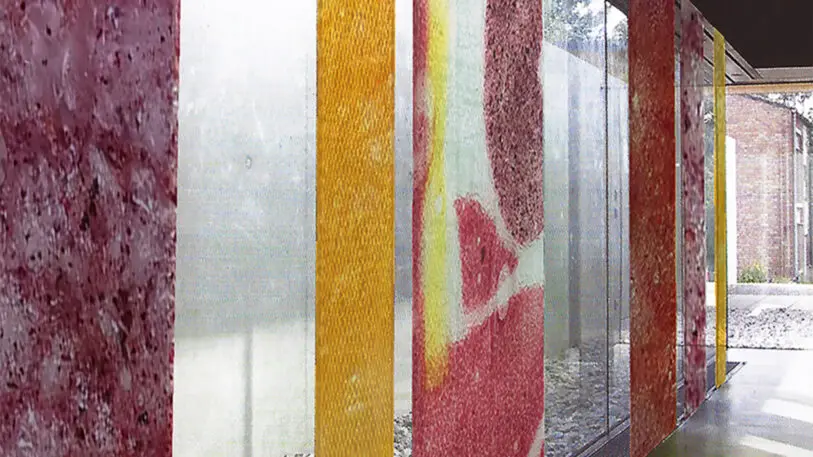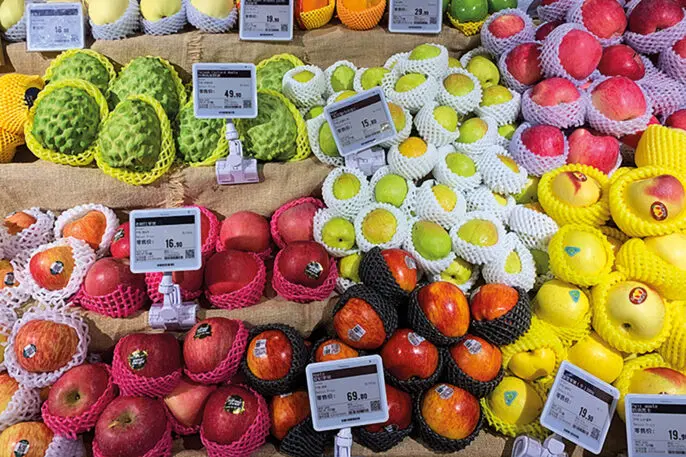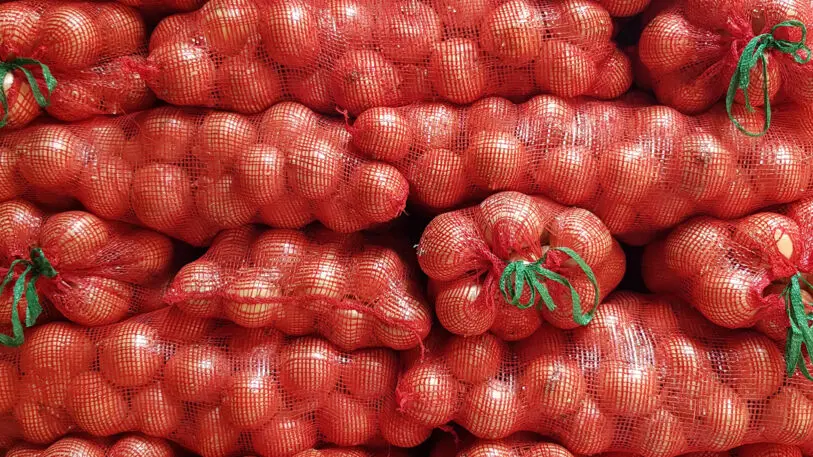The skies may have temporarily cleared during the 2020 lockdowns, but single-use plastics have been reigning supreme. Bans on plastic bags were temporarily revoked, restaurants embraced takeaway (and plastic containers), and all those groceries we had delivered at home came wrapped in an inordinate amount of packaging.
In London, 11 textile students from the Royal College of Art (RCA) were recently challenged to create new materials out of single-use plastic waste. One student found a way to mold expanded polystyrene (the spongy, bulky stuff your new computer monitor likely came slotted in) into a hard surface that could be used on walls. Another student unraveled plastic fruit nets and wove them into a mottled, hard surface that could be used to cover the seats of the London Underground.
The project, which took the shape of a competition, was the result of a yearly collaboration between London-based industrial design firm PriestmanGoode, and the Royal College of Art’s masters of arts in textiles program. The students’ work can be seen in an online exhibition as part of the London Design Festival taking place in the U.K. capital this month. Titled Precious Waste, Single Use Plastics Re-born, it’s a reminder that the next generation of designers can play a big role in the war against single-use plastics and climate change more broadly.
“There is a massive boom in terms of materialists cooking up new materials in their kitchens, but I was quite passionate to open up the students’ eyes and look at what resources they already have,” says Maria Kafel-Bentkowska, who heads PriestmanGoode’s color, material, and finish team, and who briefed the students on the task.


Voak wasn’t the only one to turn to EPS. Lianyi Chen found a way to process the material into filaments that she used for 3D printing. And Yuke Liu used expanded polyethylene foam—one of the most widely used plastics in production and with similar properties to EPS—to create a collection of painting tools like brushes and stamper markers. These could be used in museums, workshops and at home, all while teaching kids about the damage caused by plastics.



The exhibition is a celebration of recycled plastic in its colorful, textured glory—and its potential as a viable new material. In many ways, it’s also an urgent reminder that the recycling industry needs a major overhaul. “With a lot of these plastics, we are misinformed that they are recyclables,” says Kafel-Bentkowska, “but commercially, it’s difficult.”
Recognize your brand’s excellence by applying to this year’s Brands That Matter Awards before the early-rate deadline, May 3.
